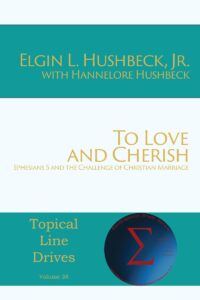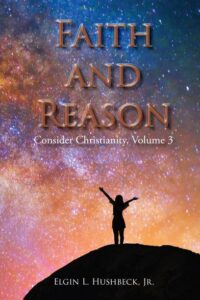Zeitgeist – The Responses II
Friday, November 16th, 2007 by Elgin HushbeckListen to the MP3
Nov 16, 2007, Wausau, Wi — Interest and discussion concerning Zeitgeist, The Movie and my three part review continues to grow, so this week I thought I would address a point that recently came up in a couple of relies to my review. These replies started out by agreeing with my review. One began, “this movie is based on incorrect facts.” Another said, “I am a Christian and I realize Zeitgeist part one was a complete total lie.”
But after agreeing, they went on to claim other grand conspiracies. The first writer went on to claim that while Zeitgeist was based on incorrect facts, the same could be said for the Bible, and religion was simply a means to control the masses and enslave them. The other writer said, “I believe the rest of the movie is true and that the US government had everything to do with [911]” and that “most Christians now believe 911 was an inside job, Satan is in control of our government.”
Both of these replies demonstrate in their own way the persistence of these grand conspiracy theories. Part of this is simply the flawed and often dishonest way in which they presented. We have a general, and somewhat necessary, view that people are honest. Even people who claim not to trust anyone still do a lot of trusting in their day to day lives. So when we hear someone telling something, there is a tendency to accept it unless we have a reason not to.
For example, one of the reasons the Christian writer gave that Parts II and III of Zeitgeist should believed even though part one was flawed is that there is a “video of Larry Silverstein admitting he demoed building 7.” Now a video of the building’s owner admitting that he was the one responsible for bringing down the building, rather than the terrorist would be pretty powerful evidence. But the actual situation is a good example of how these grand conspiracy theories work.
Now there is video of the owner, but what he says is “pull it.” The conspiracy theorists claim “pull it” is jargon which refers to bringing down a building by explosives, and thus their claim that the owner ordered the building brought down. So even when those who do check out this claim see the video, they will see just what the theorist have led them to see, Silverstein given the command to “pull it.” While this is conclusive evidence for the conspiracy theorists, and at first blush seems at least plausible, the problem is that there are other, and better, understandings of Silverstein’s statement.
Frankly given that he was talking to the Fire Department commander and his stated purpose in the video was to not to risk further loss of life, I find Silverstein’s own explanation that this referred to stopping the effort to put out the fires to be far more likely. After all if the building were to be demolished by explosives, it is extremely unlikely that the NYFD would have been in on any such conspiracy, given the number of firefighters who heroically gave their lives that day.
This is just one piece of evidence, and conspiracy theories are built upon a seaming endless stream of such claims. When people do take the time to refute them, they are often simply rejected, a part of the conspiracy. Thus when I pointed out some of refutations of the 911 conspiracy to the Christian writer defending them I was told that they were done by organizations that were “all run by a secret society called FREE MASONS.” Not only do these theory slant evidence to support them, they have a built in way of rejecting any evidence against them as part of the conspiracy.
Paul tells us that in the last days, people “will gather around them a great number of teachers, to say what their itching ears want to hear. They will turn their ears away from the truth and turn aside to myths.” (2 tim 4:3-4)
There is a very simply principle, that truth cannot be grounded in error. As we try to reach the world with the truth of the Gospel, we must be doubly careful not mix it with error. This is not a new problem. There is always a great temptation to having secret knowledge, to know what others do not; to be in on the secret. During the time of the early church, this desire expressed itself in the form of Gnosticism, a religious movement based on secret knowledge that competed with Christianity in the second century.
The conspiracy theorists of today are the modern Gnostics. Laura Curtis summarized this nicely in her blog Suspending Disbelief, when she wrote “Like Gnostics, they are the Chosen Ones, privy to information the rest of us can’t comprehend. They’re special. Part of an elite few. We can’t handle the truth! They are the messiah, here to save us from our own dangerous ignorance.”
One of the worst aspects of these conspiracy theories is that there is real evil in the world and these theories only divert our attention away from it. One does not need to be a Bush supporter to believe that Islamic terrorism is both real and evil. It existed long before Bush, and will exist long after he is out of office.
As Paul said, “test everything. Hold on to the good.” (1 Thess 5:21-22)
This is Elgin Hushbeck, asking you to Consider Christianity: a Faith Based on Fact.






